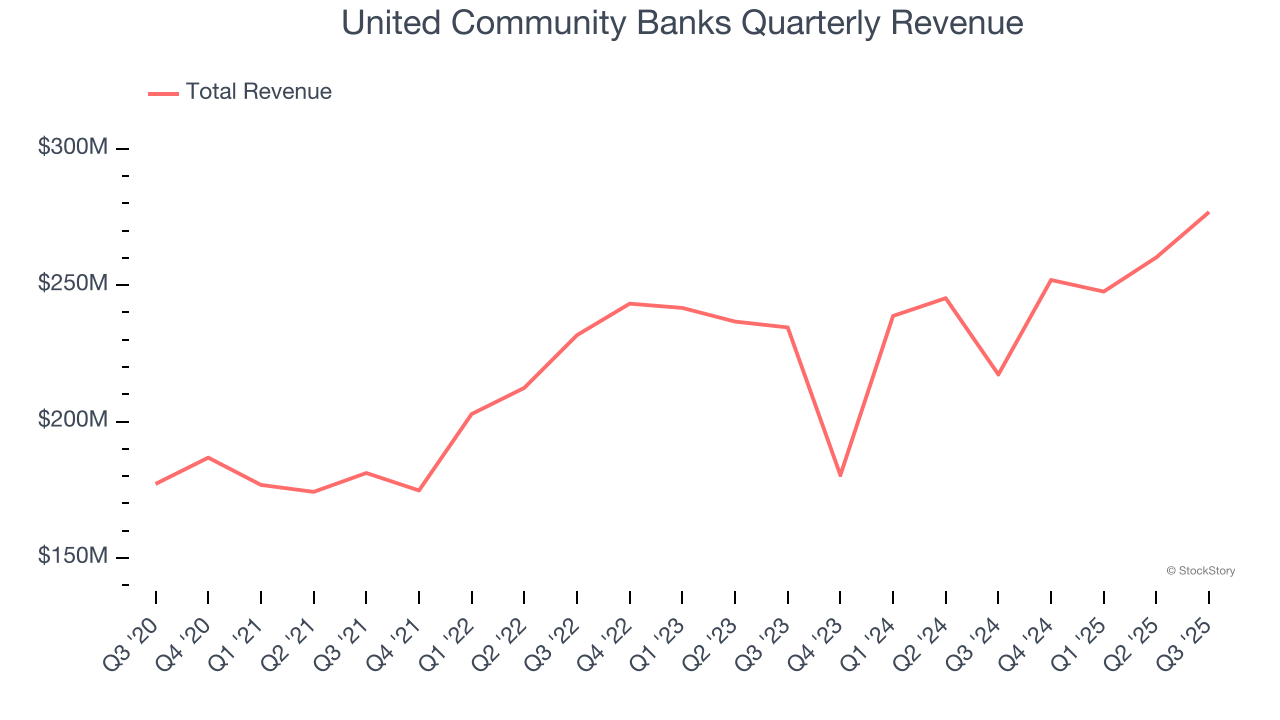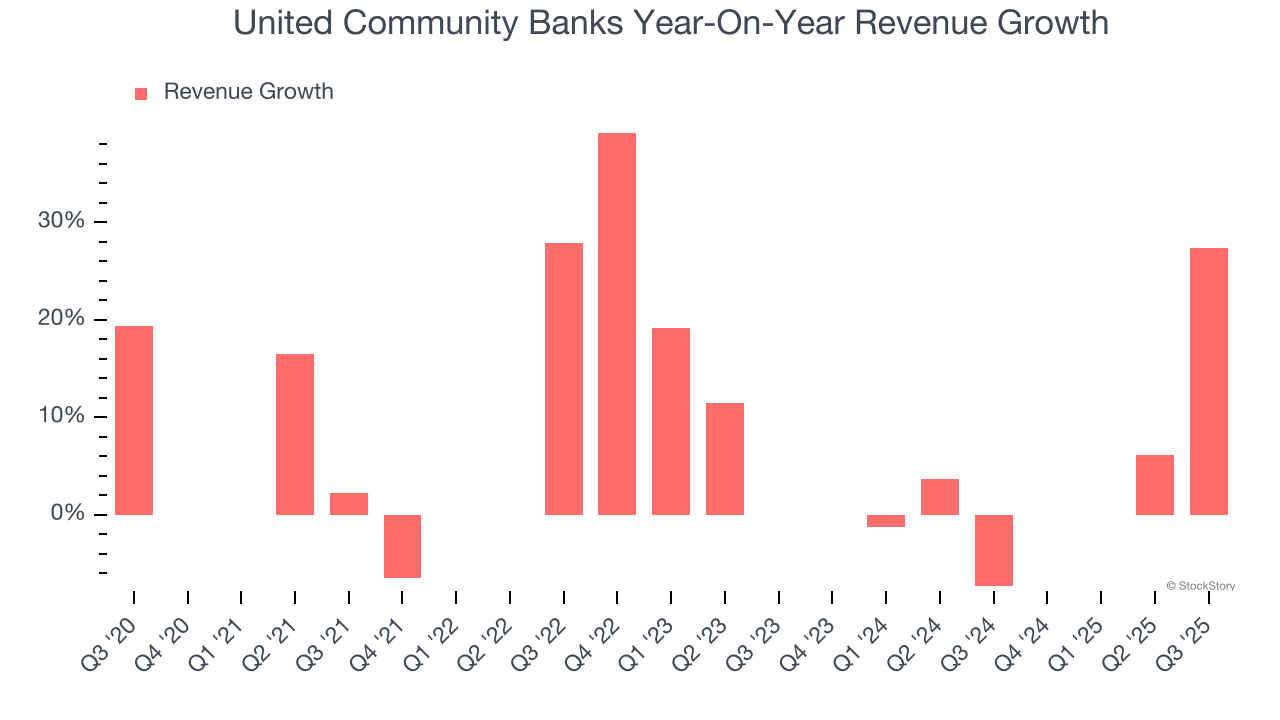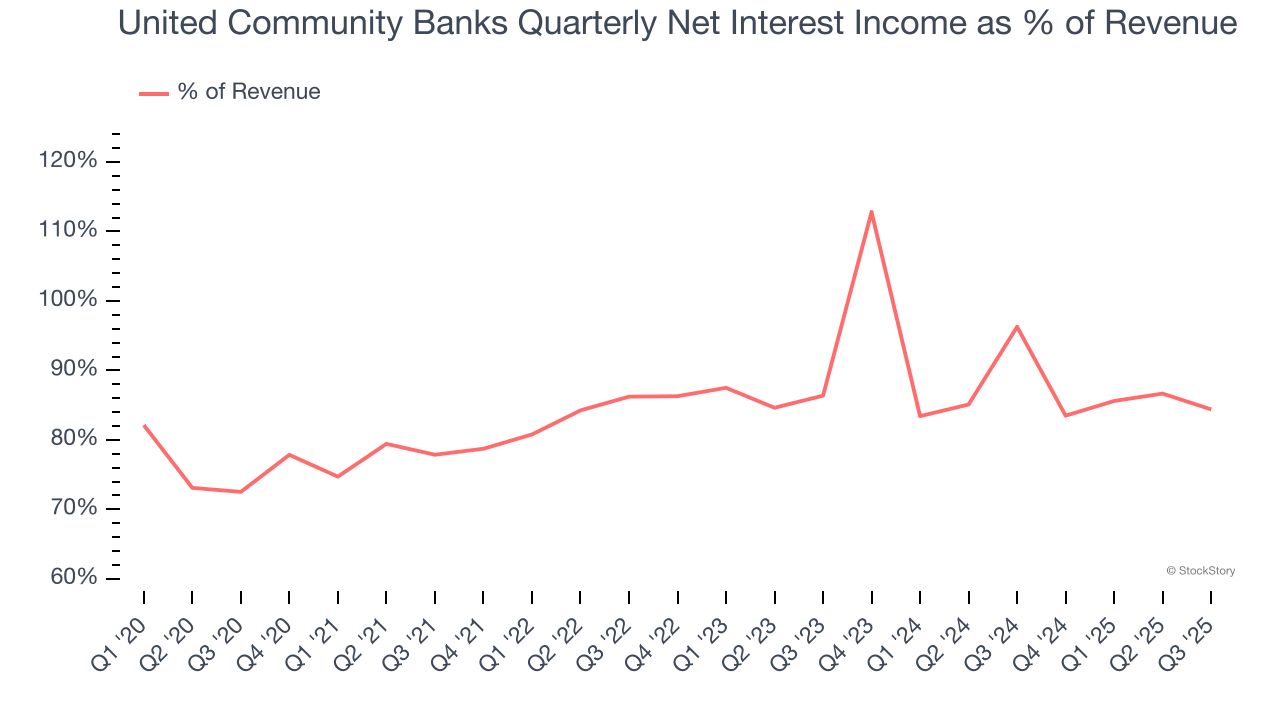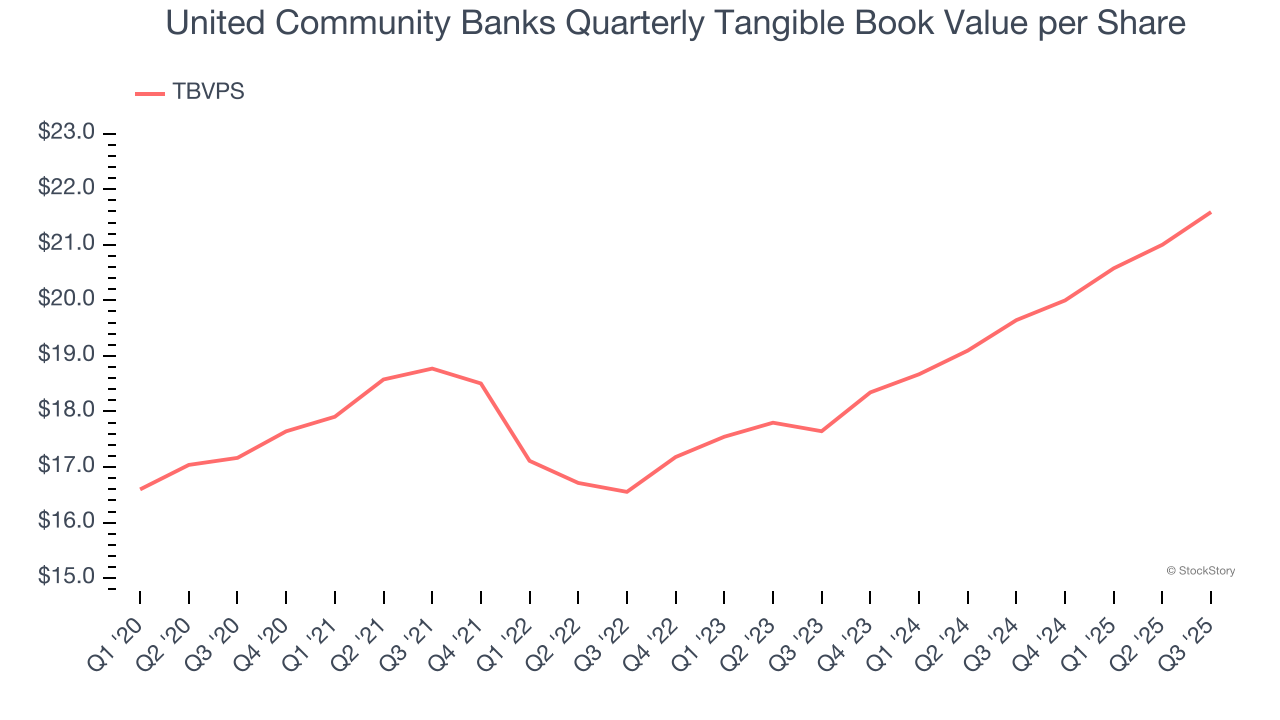
Regional banking company United Community Banks (NYSE: UCB) reported Q3 CY2025 results exceeding the market’s revenue expectations, with sales up 27.4% year on year to $276.8 million. Its non-GAAP profit of $0.75 per share was 7.8% above analysts’ consensus estimates.
Is now the time to buy United Community Banks? Find out by accessing our full research report, it’s free for active Edge members.
United Community Banks (UCB) Q3 CY2025 Highlights:
- Net Interest Income: $233.6 million vs analyst estimates of $234.4 million (11.7% year-on-year growth, in line)
- Net Interest Margin: 3.6% vs analyst estimates of 3.5% (3.7 basis point beat)
- Revenue: $276.8 million vs analyst estimates of $269.8 million (27.4% year-on-year growth, 2.6% beat)
- Efficiency Ratio: 54.3% vs analyst estimates of 53.8% (50.6 basis point miss)
- Adjusted EPS: $0.75 vs analyst estimates of $0.70 (7.8% beat)
- Tangible Book Value per Share: $21.59 vs analyst estimates of $21.50 (9.9% year-on-year growth, in line)
- Market Capitalization: $3.67 billion
Chairman and CEO Lynn Harton stated, “We are proud of our third quarter financial results. Our teams drove solid loan and deposit growth as well as healthy margin expansion. These actions resulted in meaningful improvement in our return on assets and return on tangible common equity. Tangible book value per share grew by $0.59 from the second quarter – an 11% annualized rate. Loans grew by $254 million, or 5.4% annualized, while customer deposits, excluding seasonal outflow of public funds, were up $137 million or 2.6% annualized. Non-interest bearing deposits, excluding public funds, grew at an annualized rate of 4.7%. Operating efficiency and operating leverage also both continued their improving trend.”
Company Overview
Starting as a small community bank in 1950 and expanding through strategic acquisitions across the Southeast, United Community Banks (NYSE: UCB) is a regional bank holding company that provides financial services including loans, deposits, wealth management, and merchant services across the southeastern United States.
Sales Growth
From lending activities to service fees, most banks build their revenue model around two income sources. Interest rate spreads between loans and deposits create the first stream, with the second coming from charges on everything from basic bank accounts to complex investment banking transactions. Over the last five years, United Community Banks grew its revenue at an impressive 10.9% compounded annual growth rate. Its growth beat the average banking company and shows its offerings resonate with customers.

We at StockStory place the most emphasis on long-term growth, but within financials, a half-decade historical view may miss recent interest rate changes, market returns, and industry trends. United Community Banks’s recent performance shows its demand has slowed significantly as its annualized revenue growth of 4.1% over the last two years was well below its five-year trend.  Note: Quarters not shown were determined to be outliers, impacted by outsized investment gains/losses that are not indicative of the recurring fundamentals of the business.
Note: Quarters not shown were determined to be outliers, impacted by outsized investment gains/losses that are not indicative of the recurring fundamentals of the business.
This quarter, United Community Banks reported robust year-on-year revenue growth of 27.4%, and its $276.8 million of revenue topped Wall Street estimates by 2.6%.
Net interest income made up 85.1% of the company’s total revenue during the last five years, meaning United Community Banks barely relies on non-interest income to drive its overall growth.

Our experience and research show the market cares primarily about a bank’s net interest income growth as non-interest income is considered a lower-quality and non-recurring revenue source.
Here at StockStory, we certainly understand the potential of thematic investing. Diverse winners from Microsoft (MSFT) to Alphabet (GOOG), Coca-Cola (KO) to Monster Beverage (MNST) could all have been identified as promising growth stories with a megatrend driving the growth. So, in that spirit, we’ve identified a relatively under-the-radar profitable growth stock benefiting from the rise of AI, available to you FREE via this link.
Tangible Book Value Per Share (TBVPS)
Banks are balance sheet-driven businesses because they generate earnings primarily through borrowing and lending. They’re also valued based on their balance sheet strength and ability to compound book value (another name for shareholders’ equity) over time.
This is why we consider tangible book value per share (TBVPS) the most important metric to track for banks. TBVPS represents the real, liquid net worth per share of a bank, excluding intangible assets that have debatable value upon liquidation. On the other hand, EPS is often distorted by mergers and flexible loan loss accounting. TBVPS provides clearer performance insights.
United Community Banks’s TBVPS grew at a mediocre 4.7% annual clip over the last five years. However, TBVPS growth has accelerated recently, growing by 10.6% annually over the last two years from $17.65 to $21.59 per share.

Over the next 12 months, Consensus estimates call for United Community Banks’s TBVPS to grow by 9% to $23.53, decent growth rate.
Key Takeaways from United Community Banks’s Q3 Results
We enjoyed seeing United Community Banks beat analysts’ revenue expectations this quarter. We were also glad its EPS outperformed Wall Street’s estimates. On the other hand, its net interest income was just in line. Overall, this print had some key positives. The stock traded up 8.4% to $32.75 immediately following the results.
So should you invest in United Community Banks right now? What happened in the latest quarter matters, but not as much as longer-term business quality and valuation, when deciding whether to invest in this stock. We cover that in our actionable full research report which you can read here, it’s free for active Edge members.





